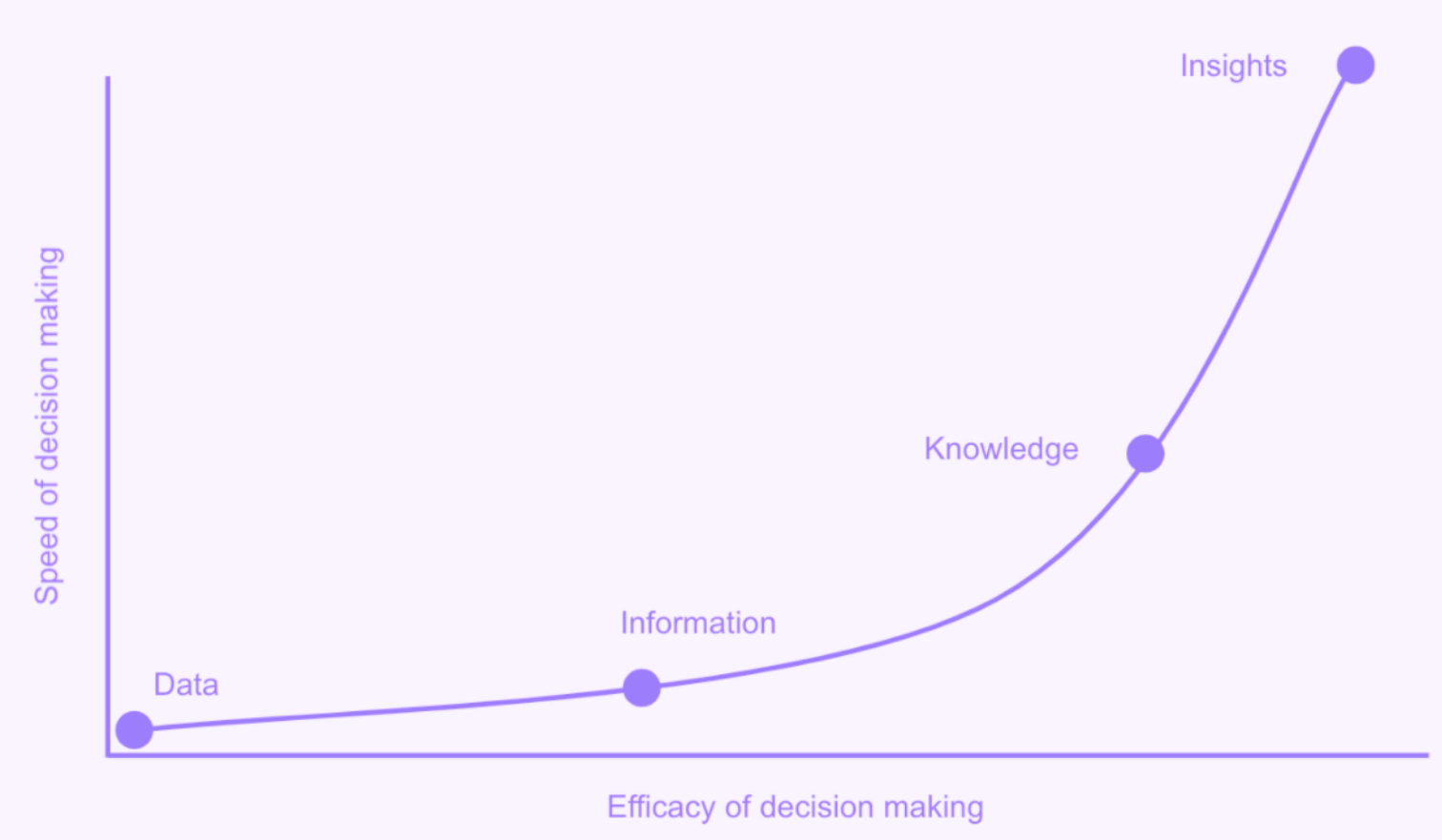

Ben Payne is the data and analytics guru at LawVu, and his forte is taking clients on the journey of harnessing data to end up with business insights. Payne has worked across multiple sectors, from power to dairy and now in-house law, and this variety of experience gives him an invaluable comprehension of how businesses of different industries can use data to their advantage.
Payne broke down the insights triangle for us, providing clarity as to the steps required to obtain insights for an in-house legal team.
First is data, which is raw information. Data could be a number, a color, a letter, a binary yes/no answer. Although we constantly produce and record data, it cannot be understood without context.
Context creates information. For example, once we know the number seven means seven matters or seven contracts, we understand what the data represents.
Making connections between information leads us to knowledge. We can organize information and see what is happening.
Insights provide the ability to connect disparate pieces of knowledge – think connecting the dots – to understand why something is happening. Insights allow us to predict future happenings.
As an example, a vendor has multiple claims regarding a product defect: this is knowledge. If the legal team can use data to understand what is causing this defect to occur, that’s insights. The legal function can then take efficient action, such as suggesting to the company that it change the manufacture of that product to create one that is more viable and that will prevent future claims. This is of benefit to the company, saving it from potential future losses. Essentially, insights allows going beyond merely fixing issues to preventing them.

Insights also tie into two key metrics, the speed of decision-making and the efficacy of decision-making. As businesses move up the pyramid of data, information, knowledge, and insights, they can make decisions faster and more accurately.
Payne points out that making a business decision based upon data such as numbers is hard. “The efficacy of decision-making is probably going to be quite poor as well because you’re taking guesses as to what’s happening.”
As we go up the pyramid to information, things are not much better. You have more context as to what the numbers mean, but that isn’t enough.
Once a business reaches the knowledge stage, there’s an acceleration in speed and efficacy of decision-making as you have more clarity. Dashboards may inform a legal team of how many contracts are open or how many disputes are being logged.
At the insights stage, decisions are being made at optimum speed and efficacy. Returning to our product defect example, if you are armed with the knowledge as to why disputes keep arising and what is causing such a defect, you can eliminate the problem.

Payne says most in-house legal teams he deals with are only operating in the “information” phase, meaning they are reactive rather than proactive and not nimble in their decision-making.
A huge driver of an in-house team’s motivation for moving to the insights stage is to demonstrate their value to the business. Operating at an insights level means you can say “last month we closed x amount of disputes, saving x dollars of potential liability”. Arming yourself with this level of information means the business will start to see its legal team in a different light – rather than being a handbrake, you become a business partner.
“The legal team can start guiding the business beyond just contracts and lawsuits to ‘if we can enforce these decisions, we won’t have these disputes, and we can reduce overload and make strategic business decisions around contracts agreements’,” says Payne.
During your in-house team’s insights journey, it is important to clearly distinguish the goals you want to achieve as a team and as a company. Think about which decisions you’re aiming to make on a daily, monthly, or quarterly basis are dependent on insights. Without direction, it is easy to become overwhelmed by the sheer amount of data that is recorded and readily available to be processed as insights. Having a purpose allows you to filter what is relevant in your in-house team’s direction.


